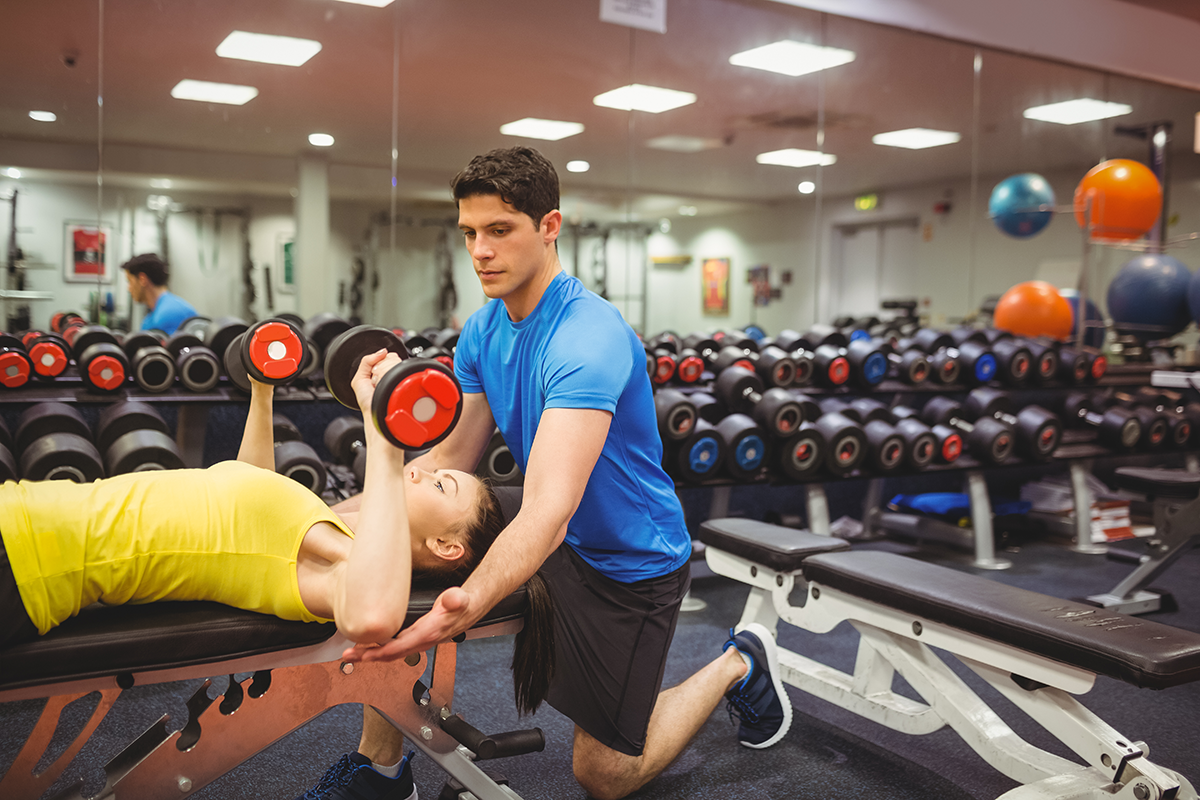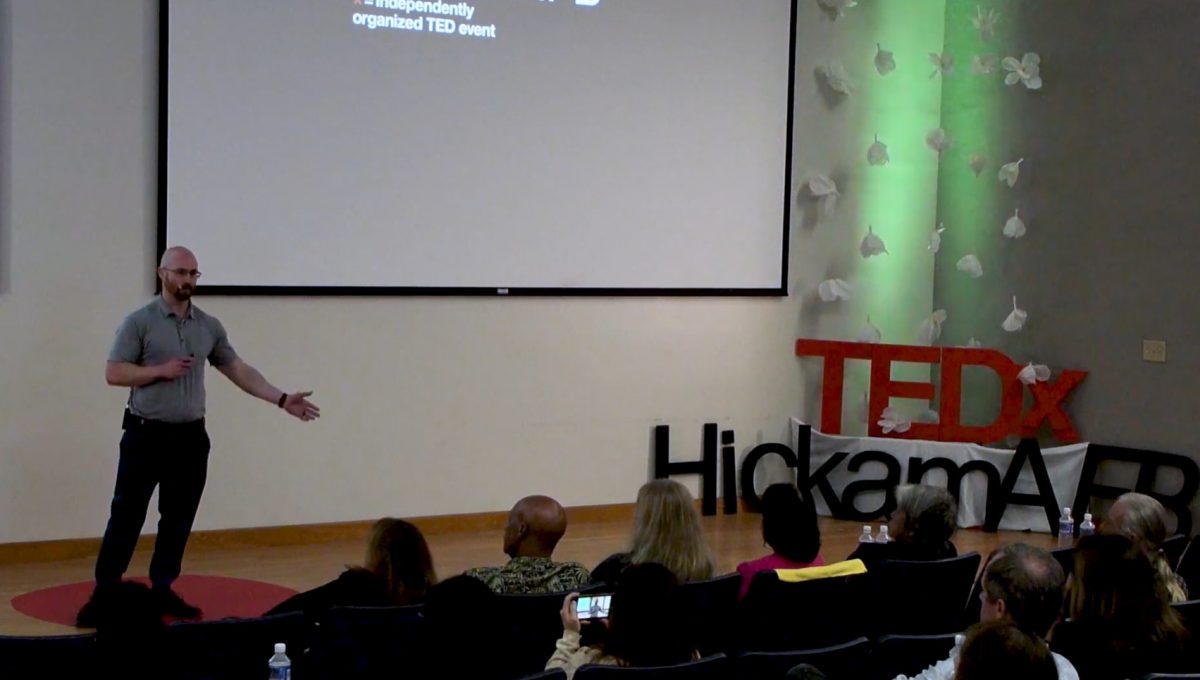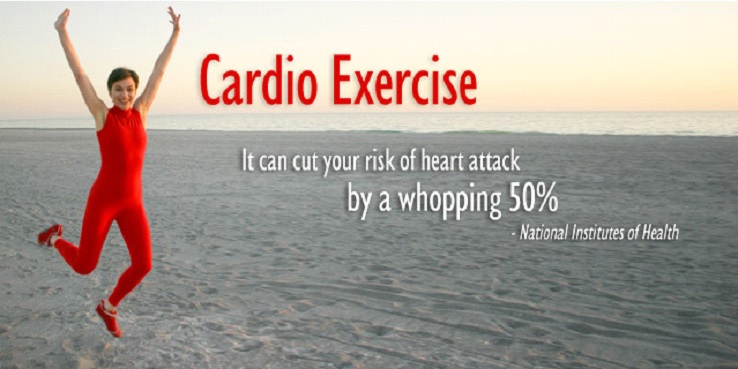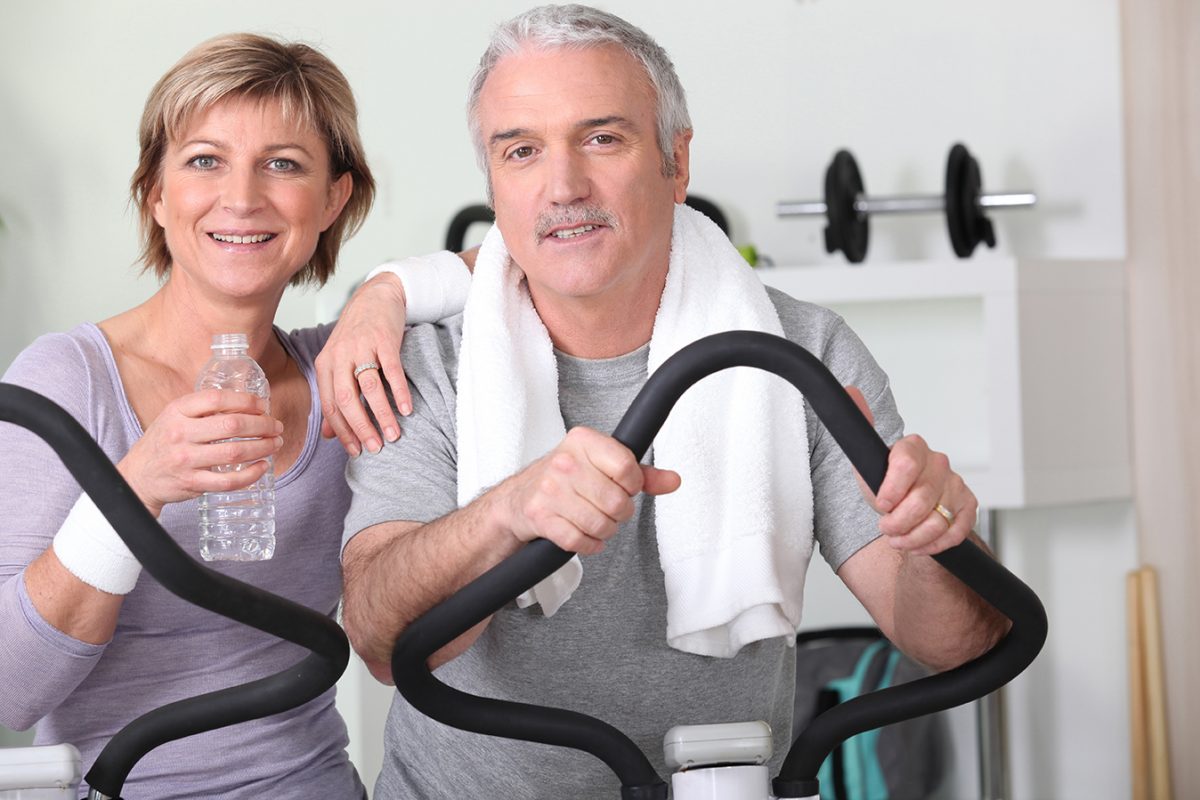Wearing High Heels All Day? These 5 Moves Will Help Alleviate Lower Back Pain
Women love their high heels. They’re designed to symbolize feminine beauty by accentuating the butt and legs, and make us taller. But, there’s a trade-off — they hurt your feet, hips, lower back, and even your shoulders and neck!
The human body is designed to walk flat. High heels raise our heels and put our feet into a plantar flexion position where the weight is concentrated at the ball of your forefeet forcing your center of gravity to shift forward. To prevent you from falling, you have to lean back and this indirectly creates excessive curvature on your lower back (lordosis) resulting in stress being placed on the lumbar area. Over time your lower back muscles become overactive in order to maintain your balance when you wear heels. While your posture in heels looks great, it’s actually abnormal.
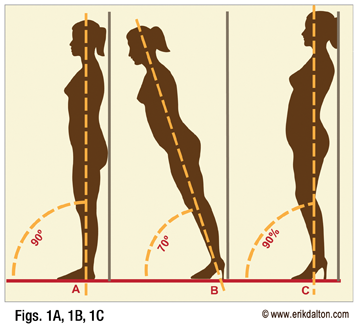
Photo: Erik Dalton
Apart from lower back pain, other side effects of wearing high heels include tight and stiff calves and soleus muscles, which run from below the knee to the heel. You may also increase your risk of spraining your ankle and having sore hips due to muscle imbalance.
5 Tips To Alleviate Lower Back Pain
1. Tennis balls to release tight and overactive lower back muscles
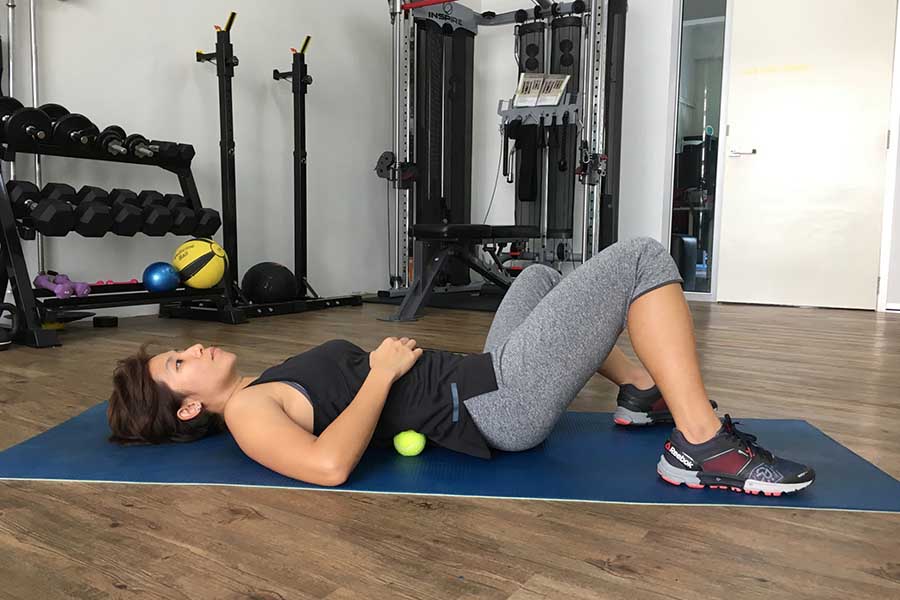
Lie on your back with both knees bent, lift your hips and place the 1 or 2 tennis balls under your lower back or the area that’s sore – avoid placing the ball directly on your spine. Gently lower your body onto the ball and place sufficient pressure until you feel a tolerable level of pain.
Maintain this pressure for at least 1 minute, or until the pain lessens. Increase the pressure and repeat the process for another 2-3 minutes. Repeat on the other side of your lower back.
2. Hip Raises to strengthen your butt
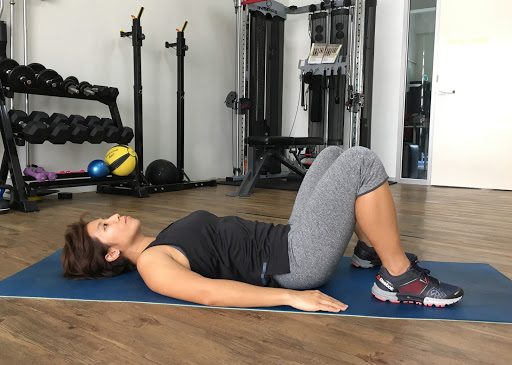
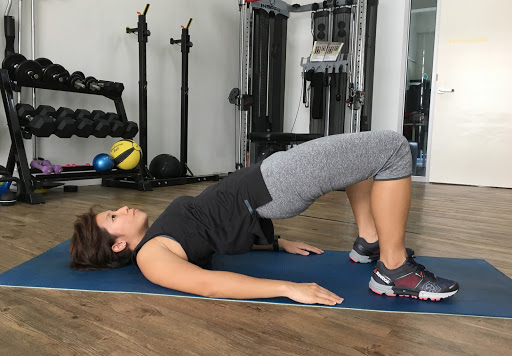
When your lower back muscles become overactive, your butt muscles weaken. This is referred to as lower cross syndrome. To strengthen your butt, lie down on your back with both knees bent, and raise your hips by pushing off from your heels. Contract your butt muscles by squeezing your cheeks together at the top. Hold for 2-3 seconds and return to the start position.
Maintain a neutral and braced spine throughout and perform 2-3 sets of 10-15 reps.
3. Strengthen abdominal muscles with the Dead Bug
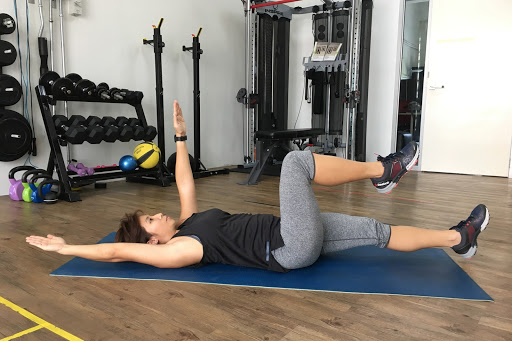
Excessive curvature of your lower back causes abdominal muscles to lengthen and weaken. Unfortunately, exercises like sit-ups and crunches can harm your spine and don’t strengthen your abs effectively. Doing the Dead Bug targets your abs and improves endurance and function, while keeping your spine safe.
To begin, lie flat on your back with your arms held out in front of you pointing to the ceiling. Bring your legs up and keep your knees bent at a 90-degree angle. Slowly lower your right arm and left leg at the same time, and keep going until your arm and leg are hovering just above the floor. Engage your abs and keep your back as flat as possible. Hold the position for 2-3 seconds and slowly return to the starting position. Repeat on the opposite side.
Stop if you feel pain at your lower back as this could mean your abs aren’t properly engaged and you’re using your lower back instead of your abdominals. Opt for an easier variation or skip this exercise and consult a qualified trainer.
4. Stretch the calves and soleus muscles
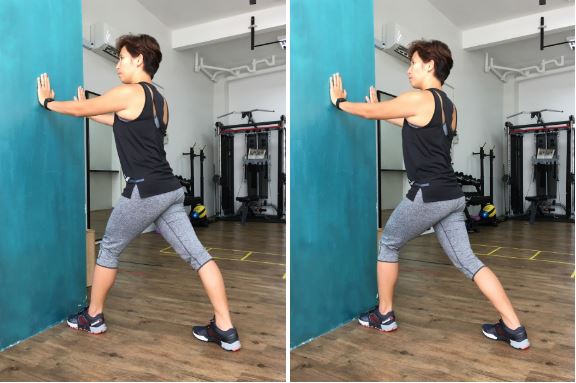
Place your hands on a wall and stand with one foot behind. Keep your back leg straight and push your heel towards the ground to stretch the calves. After 30 seconds, bend your back knee slightly and try to keep your heel on the ground to target the soleus. Repeat with the other leg.
5. Stretch your hip flexor
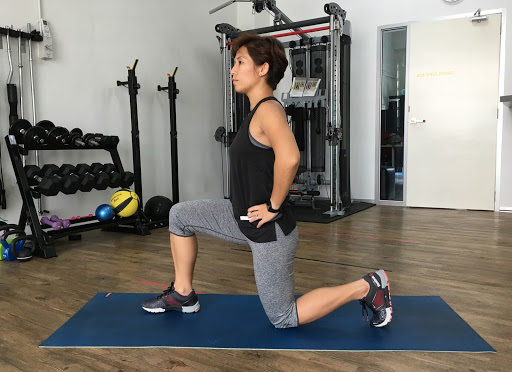
Stretching the hip flexor for people with lower back pain is important. To do this effectively, get into a lunge position, contract your butt and tilt your hips upwards by tucking in your tailbone – you should feel the muscles above your quads stretch. Cushion your knees with a towel or exercise mat. Hold this stretch for at least 30-60 seconds, then repeat on the other side.
Lower back pain is unfortunately inevitable if you wear high heels over a period of time. Try wearing a lower heel to minimize muscle compensation or only wear heels if it’s absolutely necessary. If your lower back is acting up, wear cushioned flat sole shoes to alleviate the pain, and don’t forget to practice the exercises above!
Reprinted with permission by Ke Wynn Lee. Pictures courtesy of Ke Wynn Lee.
Ke Wynn Lee, author and an international award-winning corrective exercise specialist, currently owns and operates a private Medical Fitness Center in Malaysia. Apart from coaching, he also conducts workshops and actively contributes articles related to corrective exercise, fitness & health to online media and local magazines.
References
- https://www.ncbi.nlm.nih.gov/pmc/articles/PMC3206568/
- http://www.muscleimbalancesyndromes.com/janda-syndromes/lower-crossed-syndrome/
- http://www.cooperinstitute.org/2016/07/15/are-tight-hip-flexors-contributing-to-your-low-back-pain


